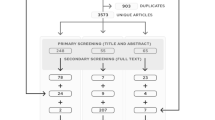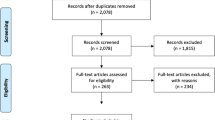Abstract
Objectives: To identify specific adolescent sub-populations; to evaluate the health data available regarding these populations related to 21 key national adolescent health objectives from Healthy People 2010; and to make recommendations for improving data capacity to further efforts to reduce health disparities among adolescents.
Methods: Adolescent populations were identified through a consensus process. Academic and government literature was extensively reviewed using internet search techniques to identify available national data for each of these populations on each key national health objective.
Results: 18 adolescent subpopulations were identified. These populations fit into four overlapping categories defined by demography, legal status, chronic health condition, or other special characteristics. Overall, national, population-based data regarding these sub-populations were located for 36% of the 21 health objectives. Within the sub-populations, most data was available for ethnic/racial groups, with 57–81% of each of the objectives having data. Data regarding rural/urban groups were found for about one-half of the 21 objectives, and data were located on all other groups for one-fourth or fewer of the objectives. Within the objectives, substance abuse objectives were the most widely measured, with data available for 56–78% of the various populations. For some objectives, such as drug-or alcohol-related motor vehicle deaths depression among the developmentally disabled, no national data were found.
Conclusions: There are still too little data available regarding the specific health status or health objectives for different adolescent populations. A national adolescent data-priority agenda is needed to develop strategies to improve health data regarding adolescent sub-populations. Federal and state health monitoring agencies could create national health profiles of different populations, include more population markers in health studies, and develop tools for population-specific health assessment, particularly for those within the government’s care, including incarcerated and foster care youth.
Similar content being viewed by others
References
Institute of Medicine. Future of public health. Washington, DC: National Academy Press; 1989.
U.S. Department of Health and Human Services. Healthy People 2010. 2nd Edn. (Understanding and improving health, Vol. 1). Objectives for improving health, Vol. 2). Washington, DC: U.S. Government Printing Office; November 2000.
Centers for Disease Control and Prevention, National Center for Chronic Disease Prevention and Health Promotion, Division of Adolescent and School Health, Health Resources and Services Administration, Maternal and Child Health Bureau, Office of Adolescent Health, National Adolescent Health Information Center, University of California, San Francisco. Improving the health of adolescents & young adults: a guide for states and communities. Atlanta: Author; 2004.
U.S. Congress, Office of Technology Assessment. Adolescent health — volume I: summary and policy options (Publication No. OTA-H-468). Washington, DC: U.S. Government Printing Office; April 1991.
Ozer E, Park MJ, Paul T, et al. America’s adolescents: are they healthy? San Francisco: University of California, San Francisco, National Adolescent Health Information Center; 2003.
Newacheck PW, Hung YY, Park MJ, et al. Disparities in adolescent health and health care: does socioeconomic status matter? Health Serv Res 2003;38:1235–52.
Brindis C, Ozer E, Handley M, et al. Improving adolescent health: an analysis and synthesis of health policy recommendations. full report. San Francisco: National Adolescent Health Information Center, University of California, San Francisco; 1998.
Centers for Disease Control and Prevention. Data 2010, the Healthy People 2010 Database [Online Database]. Available online at: http://wonder.cdc.gov/data2010/. Accessed November 22, 2006.
U.S. Census Bureau. American factfinder, 2005 American community survey [Online Tables]. Available online at: http://factfinder.census.gov. Accessed August 25, 2006.
O’Hare P. The overlooked undercount: children missed in the Decennial Census. Baltimore: Anne E. Casey Foundation; 1999.
Robinson JG, West KK, Adlkha A. Coverage of the population in census 2000: results from demographic analysis. Popul Res Policy Rev 2002;21:19–38.
West KK, Robinson JG. What do we know about the undercount of children? [Population Division Working Paper No. 39]. Washington, DC: U.S. Census Bureau, Population Division; 1999.
Indian Health Service. Trends in Indian health, 1996. Washington, DC: U.S. Department of Health and Human Services, Indian Health Service; 1996.
Bhopal R, Donaldson L. White, European, Western, Caucasian, or what? Inappropriate labeling in research on race, ethnicity, and health. Am J Public Health 1998;88:1303–07.
U.S. Census Bureau. Foreign-born population of the united states. Current Population Survey - March 2004[Detailed Tables (PPL-176)]. Available online at: http://www.census.gov/population/www/socdemo/foreign/ppl-176.html. Accessed June 20, 2005.
Committee on the Health and Adjustment of Immigrant Children and Families, Hernandez DJ, editor. Children of immigrants: health, adjustment, and public assistance. Washington, DC: National Academy Press; 2000.
Fields J. Children’s living arrangements and characteristics: march 2002[Detailed Tables for Current Population Survey Report P20-547]. Available online at: http://www.census.gov/population/www/socdemo/hh-fam/cps2002.html. Accessed June 21, 2005.
Frontier Education Center. Frontier Youth: Living on the Edge. Sante Fe, NM: National Clearinghouse for Frontier Communities. Available online at: http://frontierus.org/; Accessed June 21, 2005.
U.S. Census Bureau. Current population survey, 2005 Annual Social and Economic Supplement [Table POV34]. Available online at: http://pubdb3.census.gov/macro/032005/pov/toc.htm; Accessed January 11, 2006.
U.S. Department of Health and Human Services, Administration for Children and Families, Administration on Children, Youth, and Families, Children’s Bureau. The AFCARS report [Interim FY 2004 estimates as of June 2006. (11)]. Available online at: http://www.acf.hhs.gov/programs/cb/stats_research/afcars/tar/report11.htm, Accessed August 25, 2006.
U.S. Department of Health and Human Services, Administration for Children and Families, Administration on Children, Youth, and Families, Children’s Bureau. Report to congress on kinship foster care, 2000. Available online at: http://aspe.hhs.gov/hsp/kinr2c00/full.pdf; Accessed June 11, 2002.
Federal Bureau of Investigation, U.S. Department of Justice. Crime in the United States, 2004: uniform crime reports. Washington, DC: US Government Printing Office; 2005. Available online at: http://www.fbi.gov/ucr/cius_04./ Accessed January 11, 2006.
Sickmund M, Sladky TJ, Kang W. Census of juveniles in residential placement databook [Online Tables]. 2006. Available online at: http://www.ojjdp.ncjrs.org/ojstatbb/cjrp/; Accessed January 11, 2006.
Harrison PM, Beck, AJ. Prison and jail inmates at midyear 2005 [NCJ 213133]; 2006. Available online at: http://www.ojp.usdoj.gov/bjs/abstract/pjim05.htm. Accessed August 25, 2006.
Office of Juvenile Justice and Delinquency Prevention. OJJDP statistical briefing book. Available online at: http://ojjdp.ncjrs.org/ojstatbb/probation/qa07102.asp?qaDate=20050913. Accessed January 11, 2006.
U.S. Department of Health and Human Services, Administration on Children, Youth, and Families. Child maltreatment 2004. Washington, DC: U.S. Government Printing Office; 2006. Avai- lable online at: http://www.acf.hhs.gov/programs/cb/pubs/cm04/index.htm. Accessed August 25, 2006.
Sedlak AJ, Broadhurst DD. Third national incidence study of child abuse and neglect. Rockville, MD: Westat, Inc; 1996.
Adams PF, Barnes PM. Summary health statistics for the US population: national health interview survey, 2004. Vital Health Stat 2005;10:1–113. Available online at: http://www.cdc.gov/nchs/data/series/sr_10/sr10_229.pdf. Accessed August 25, 2006.
Van Dyck P, Kogan M, McPherson M, et al. Prevalence and characteristics of children with special health care needs. Arch Pediatr Adolesc Med 2004;158:884–90.
Bloom B, Dey AN. Summary health statistics for US Children: national health interview survey, 2004. Vital Health Stat 2006;10:1–94. Available online at: http://www.cdc.gov/nchs/data/series/sr_10/sr10_227.pdf. Accessed August 25, 2006.
US Census Bureau. Statistical abstract of the US: 2004–2005, education section. Available online at: http://www.census.gov/prod/2004pubs/04statab/educ.pdf. Accessed June 27, 2005.
Simpson G, Bloom B, Cohen R, et al. US children with emotional and behavioral difficulties: Data from the 2001, 2002, and 2003 national health interview surveys. Adv Data Vital Health Statist 2005;360:1–14. Available online at: http://www.cdc.gov/nchs/data/ad/ad360.pdf. Accessed July 12, 2005.
U.S. Department of Health and Human Services. Mental health: a report of the surgeon general. Rockville: U.S. Department of Health and Human Services; 1999.
Ringwalt C, Greene J, Robertson M, et al. The prevalence of homelessness among adolescents in the United States. Am J Public Health 1998;88:1325–28.
Hammer H, Findelhor D, Sedlak A. Runaway/thrownaway children: national estimates and characteristics. National incidence studies of missing, abducted, and thrownaway children. Washington, DC: Office of Juvenile Justices and Delinquency Prevention; 2002.
U.S. General Accounting Office. Homeless and runaway youth receiving services at federally funded shelters (GAO/HRD-90-45). Washington, DC: U.S. General Accounting Office; 1989.
Finkelhor D, Hotaling G, Sedlak A. Missing, abducted, runaway, throwaway children in America. Washington, DC: Office of Juvenile Justice and Delinquency Prevention; 1995.
Russell ST, Franz BT, Driscoll AK. Same-sex romantic attraction and experiences of violence in adolescence. Am J Public Health 2001;91:903–6.
Council on Scientific Affairs, American Medical Association. Health care needs of gay men and lesbians in the U.S. JAMA 1996;275:1354–59.
American Academy of Pediatrics, Committee on Adolescence. Homosexuality and adolescence. J Pediatr 1993;92:631–4.
Remafedi GRM, Blum R, Harris L. Demography of sexual orientation in adolescents. J Pediatr 1992;89:714–21.
DuRant RH, Krowchuk DP, Sinal SH. Victimization, use of violence, and drug use at school among male adolescents who engage in same-sex sexual behavior. J Pediatr 1998;133:113–17.
The Alan Guttmacher Institute. U.S. Teenage pregnancy statistics overall trends, trends by race and ethnicity and state-by-state information. New York: AGI; updated February 2004.
McLoyd VC, Lozoff B. Racial and ethnic trends in children’s and adolescents’ behavior and development. In: Smelser N, Julius Wilson W, Mitchell F, editors. America becoming: racial trends and their consequences. National Research Council. Washington DC: National Academy Press; 2001.
Currie C, Elton RA, Todd J, et al. Indicators of socioeconomic status for adolescents: the WHO health behavior in school-aged children survey. Health Educ Res 1997;12:385–97.
Batista-Foguet JM, Fortiana J, Currie C, et al. Socioeconomic indexes in surveys for comparisons between countries. An applied comparison using the family affluence scale. Soc Indicators Res 2004;67:315–32.
Bontempo DE, D’Augelli AR. Effects of at-school victimization and sexual orientation on lesbian, gay, or bisexual youths’ health risk behavior. J Adolesc Health 2002;30:5;364–374.
Massachusetts Department of Education. 2003 Youth risk behavior survey results. Malden: Massachusetts Department of Education; 2004. Available online at: http://www.doe.mass.edu/hssss/yrbs/03/results.pdf. Accessed June 21, 2005.
National Center for Child Death Review Policy and Practice, Michigan Public Health Institute. 2438 Woodlake Circle, Suite 240 Okemos, MI 48864 [www.childdeathreview.org].
Irwin CE Jr. The theoretical concept of at-risk adolescents. Adol Med: State Art Rev 1990;1:1–14.
Roth JL, Brooks-Gunn J. Youth development program: risk, prevention and policy. J Adolesc Health 2003;32:170–82.
Catalano RF, Hawkins JD, Berglund ML, Pollard JA, Arthur MW. Prevention science and positive youth development: competitive or cooperative frameworks? J Adolesc Health 2002;31:230–9.
Eccles J, Gootman JA, editors. Community programs to promote youth development. Washington, DC: National Academy Press; 2002.
Acknowledgments
This research is supported in part by the Maternal and Child Health Bureau grant numbers U45MC 00002 and U45MC 00023 and the Murdoch Endowment. The authors wish to thank Milton Kotelchuck for editorial review. We also thank Lauren Ralph for research assistance and Michael Berlin for editorial assistance.
Author information
Authors and Affiliations
Corresponding author
Rights and permissions
About this article
Cite this article
Knopf, D.K., Jane Park, M., Brindis, C.D. et al. What Gets Measured Gets Done: Assessing Data Availability for Adolescent Populations. Matern Child Health J 11, 335–345 (2007). https://doi.org/10.1007/s10995-007-0179-2
Received:
Accepted:
Published:
Issue Date:
DOI: https://doi.org/10.1007/s10995-007-0179-2




